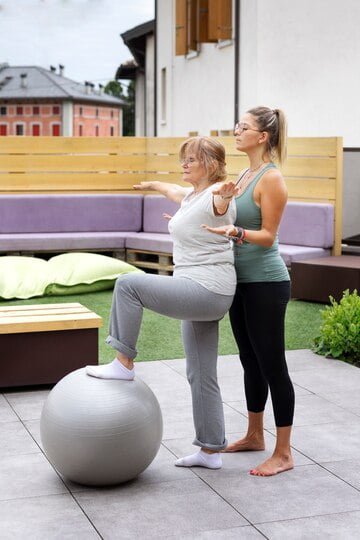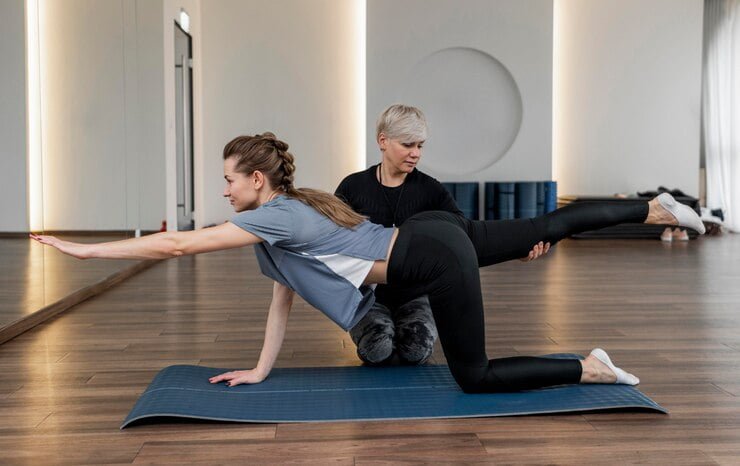
Bow hunting is a physically demanding activity that requires strength, stability and endurance. Your body needs to be in top form whether you are drawing the bowstring, maintaining steady aim, or trekking through rugged terrain. In this blog we will go through some of the essential exercises that can improve your performance and thus make your hunting trips become more enjoyable and effective.
Why Physical Fitness Matters in Bow Hunting
Before we delve into the exercises, it’s important we understand why physical fitness is important for a bow hunter. Unlike rifle hunting where you take longer-range shots, bowhunting often means getting closer to your prey. This involves a lot of walking sometimes on uneven ground as well as keeping your aim steady for long periods of time. So being fit is highly instrumental in improving accuracy, minimizing injuries and making the whole experience more fun.
Core Strength
For accurate shots stability and balance which comes from strong core muscles are vital. Below are some key exercises to build core strength:
Planks
How to do it:
Assume a push-up position but rest on your forearms rather than hands.
Keep your body straight from head to heels.
Hold this position as long as possible.
Benefits:
Develops stamina in abdominal muscles.
Enhances overall stability upon which steadiness of aim depends.
Russian Twists
How to do it:
Sit on the floor with knees bent and feet off the ground.
Hold a weight or medicine ball with both hands.
Twist torso to right then left equals one rep.
Benefits:
Strengthens oblique muscles required for rotational stability.
Lying Leg Raises
How To Do It:
Lie down with legs straight along floor
Raise until legs become perpendicular with floot
Slowly lower without touching the ground again.
Benefits:
Activates lower abs contributing towards stronger core.
Upper Body Strength
Drawing back a bow calls for significant upper body strength, especially in the shoulders, back and arms. The following exercises will help you build up these muscles.

Pull-Ups
How to do it:
Grasp a pull-up bar with an overhand grip.
Pull up until your chin is over the bar.
Slowly lower yourself back down.
Benefits:
Strengthens latissimus dorsi (lats), biceps, and deltoids all of which are essential for drawing a bow.
Dumbbell Rows
How to do it:
One knee and hand on bench for support
Hold a dumbbell in your other hand
Pull the dumbbell up towards your hip and lower it back down again
Benefits:
Targets upper back muscles thereby increasing strength and stability.
Shoulder Presses
How to do it:
Hold a dumbbell in each hand at the level of shoulders.
Push the weight upwards until your arms are fully extended.
Lower weights to shoulder height again.
Benefits:
Strengthens deltoid muscles which are necessary for holding a steady bow arm while hunting game animals.
Lower Body Strength
Strong legs are necessary for walking through tough terrain as well as maintaining balance when shooting. Some effective leg exercises include:
Squats
How To Do It:
Stand with your feet shoulder width apart.
Imagine yourself as if you were on a chair.
Go back to the starting position.
Benefits:
Helps in strengthening the quadriceps, hamstrings and glutes.

Lunges
How to do it:
Stand with your feet placed close together.
One foot ahead of the other, while bending both the knees at right angles bring down your body
Return to the beginning position and repeat with the other leg
Benefits:
Enhances balance and develops strong legs.
Calf Raises
How to do it:
Stand on toes on an edge or step off a ledge so that your heels hang freely.
First lift up your ankles as high as they can reach before dipping them below step level again.
Benefits:
Calf muscles become stronger and this helps active athletes maintain stability and endurance.
Cardiovascular Endurance
Cardiovascular fitness is important for energy preservation during long hunting excursions. Below are a few cardio exercises that you can undertake:
Running
How to do it:
Integrate running into your weekly schedule.
A minimum of 30 minutes of jogging for three days per week is what one should plan for (Minimum).
Benefits:
Enhances heart health and stamina levels.
Hiking
How to do it:
Hike through similar terrain where you hunt regularly doing so will help you readjust accordingly when necessary during hunting trips, but carrying backpacks would also simulate our condition out there in nature,
Benefits:
It increases robustness of leg muscles thus making them strong; all this combined makes a person able to endure much more hardships without giving up or getting tired too quickly; among hunters especially those who have already tried it know that going such distances isn’t easy thing because there are plenty hillsides which must be climbed over again until reaching final destination, even then things don’t end here yet – several hours spent walking under boiling sun without any rest whatsoever…
Cycling
How to do it:
Use a stationary bicycle or go cycling outside.
Plan for 30-60 minutes of cycling twice or thrice per week.
Benefits:
It increases the heart condition without exerting too much pressure on the joints.
Flexibility and Mobility
For injury prevention and to ensure free movement, flexibility as well as mobility are key. Below are a few activities that can enhance your flexibility:
Yoga
How to do it:
Encompass yoga sessions in your weekly routine.
Focus on stretches that promote more flexible muscles and abdominal strength as this will prevent injuries during hunting trips too;
Benefits:
Flexible body is less prone to injuries; when practicing stretching exercises such as these you increase your muscle flexibility which then allows for better range of motion throughout any given situation where something happens unexpectedly like bending down suddenly while walking along narrow trail with loose rocks underneath…
Dynamic Stretching
How to do it:
Perform leg swings, arm circles, torso twists etc before exercising.
Benefits:
This prepares the muscles for activity, and also makes them more pliable thereby increasing their range of motion.
Foam Rolling
How to do it:
Massage tight muscles using foam roller(s).
Concentrate on particular regions including: back parts; leg sizes; shoulder widths;
Benefits:
Tightened up muscles become relaxed again by massaging with foam rollers and then ability returns leading to better motions in general.
FAQs
Are these exercises also good for other types of hunting?
Yes, you can use these exercises to get better at any outdoor activity that requires physical labor such as different types of hunting. They are designed to build overall strength, stamina and flexibility that are important in many outdoor activities.

Want to upgrade from a beginner’s level in bow-hunting? Then join our community of nature adventurers for expert advice on equipment, pro tips and much more. Remember to sign up for our newsletter in order not miss any news!